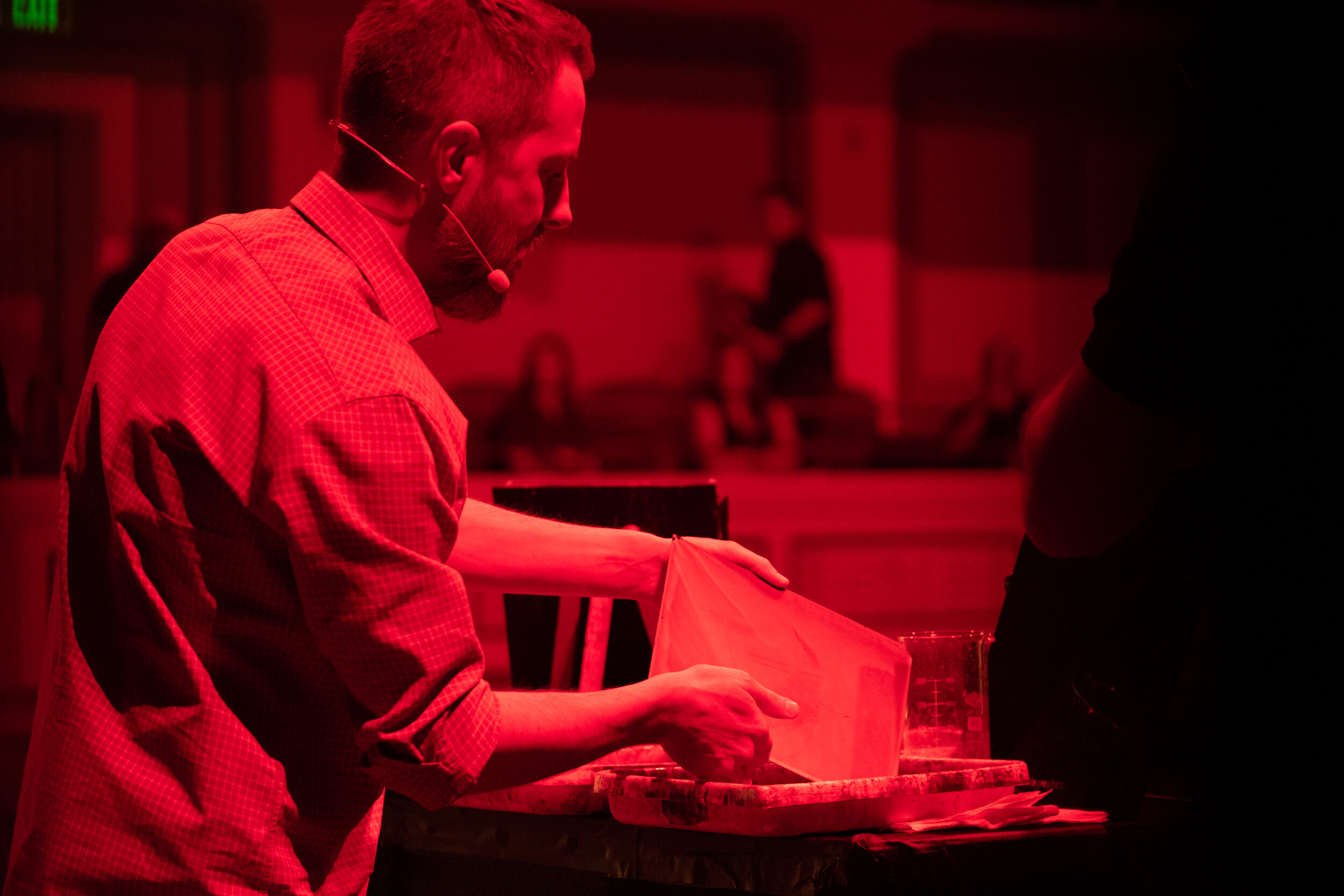Transforming a Symphony Hall Into What Might be the World’s Largest Darkroom
In September of this year, I took a big risk with a good chance of failure. Not only that, but it was done live, on-stage in front of 1400 people.
It started as a half-crazy idea via Twitter to turn the Schermerhorn Symphony Center into a massive darkroom during the annual STORY Conference in Nashville, Tennessee.
I have been working with STORY for the past two years doing tintypes for the conference’s speakers and VIP guests. However, this was a pitch to be a speaker. Not only to speak, but to do a tintype live, on stage, and fully out in the open.
If you are not familiar with the making of a tintype, the time between exposure and development has to be done quickly, and the plate can’t dry out. It’s called Wet Plate for a reason.
So, when you travel away from the studio, the entire darkroom setup has to go with you. All of the chemicals, all of the trays, access to water, etc. Usually this involves setting up a makeshift darkroom in a closet or even using an ice fishing tent.
The planned shoot was going to be of a live musician who would be performing on an open stage. I normally shoot with strobes in rooms where the ceiling and walls are close. I get more light from some of the bounce. I also have the luxury of ensuring the subject is, for the most part, sitting still when I expose the plate.
How does one prepare for this? Well, luckily, I have children who are *sometimes* cooperative with my crazy photography experiments. I handed my 5-year-old daughter an old banjo, setup outdoors at night next to the garage, and told her to pretend to play. Not only did I want to get the lighting close to right, but I also wanted to convey movement. Two test shots later, I felt like I was ready.
But what about the darkroom part of this? That’s where an expert lighting and video team came to the rescue. We worked through the timing of dimming the house lights, bringing up all red, and ensuring that no external sunlight was going to make its way in.
I was not too worried about extra ambient light from aisle lights, exit signs, or even people’s phones. Wet Plate photography has an effective ISO of under 5, so as long as we didn’t get anything full spectrum or UV, we *should* be good. Would those LED panels or lights create havoc on the plate when it’s out in the open? What if the sunlight works its way through the shades at the top of the auditorium?
The day came, and I was the first speaker. Intertwined with a brief talk, the plate was poured. It was sensitized, exposed, developed, and fixed; all in the open in front of a sold out crowd of 1400 people!
You could feel the anticipation from the audience. Would it work? It felt really great when the plate appeared through the fix, and the crowd loved it. Even more of a surprise to everyone was that it was done as a triple exposure.
While we didn’t have Guinness on hand to tell us for sure that we had just created the world’s largest dark room, in that brief moment, I’m sure that no one else had one larger. Next time, we will have them on standby and ready.
Blake’s Instagram: https://instagram.com/blakew
Blake’s Website: https://www.blakewylie.com
STORY Gatherings: https://storygatherings.com/
Okorie “OKCello” Johnson: https://www.okcello.com/





